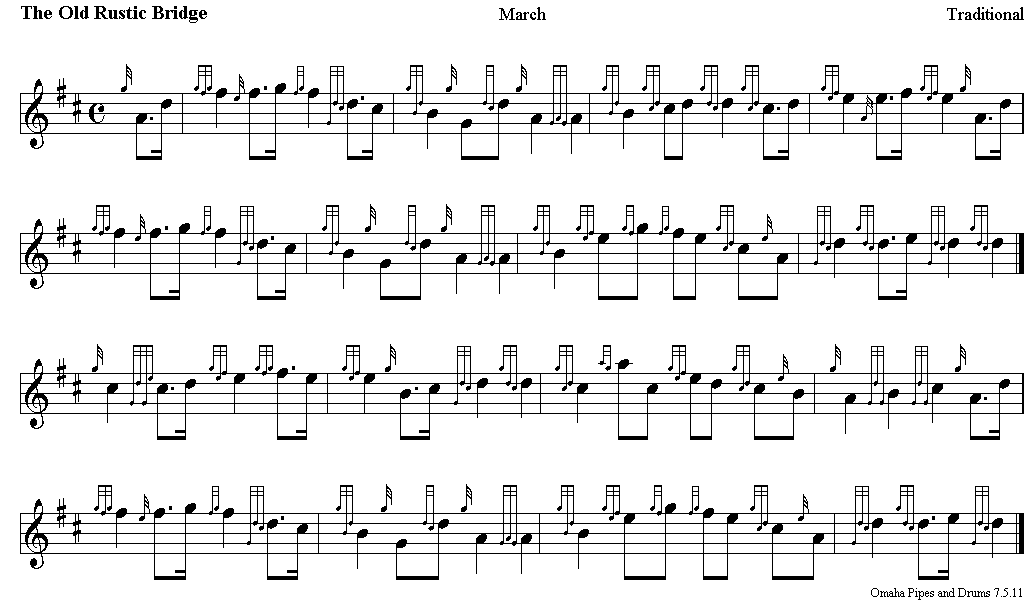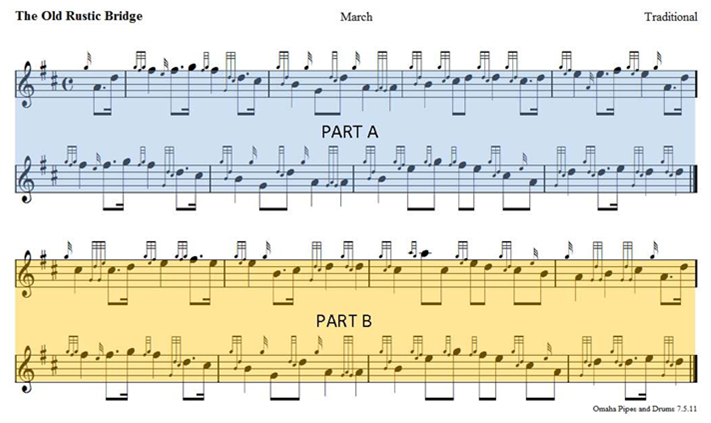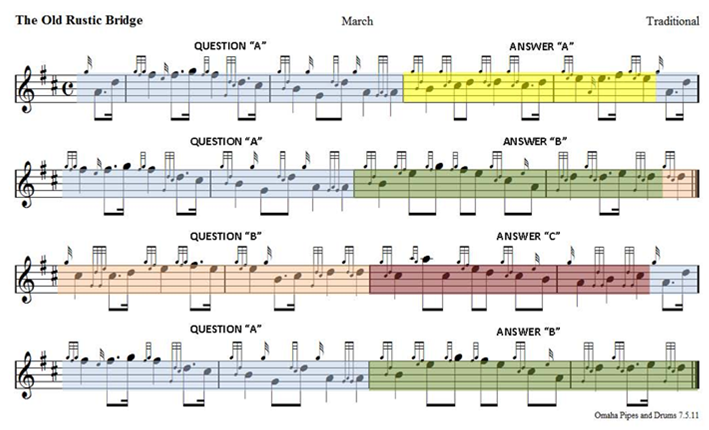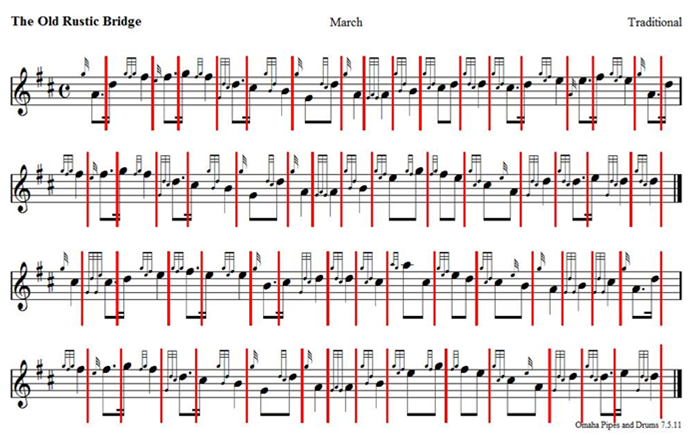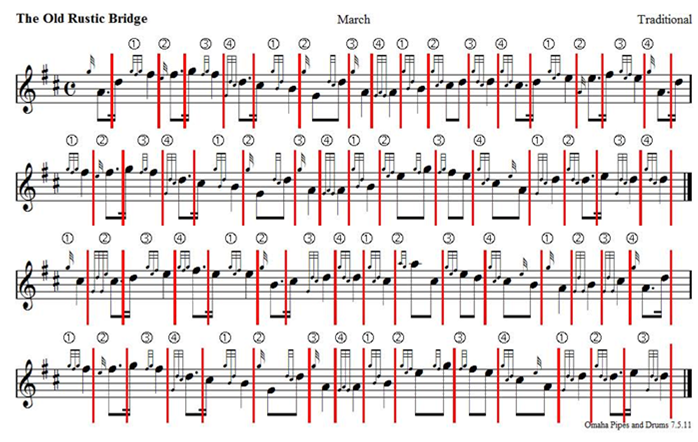| This Week’s Topic… | |

Best viewed in
|
The Many Views of a Tune There are many ways to view a tune. Music notation is a system that represents aurally perceived music, through the use of written symbols. Modern music notation originated in European classical music and is now used by musicians of many different genres throughout the world – including piping. The system uses a five-line staff. Pitch is shown by placement of notes on the staff and duration is shown with different note values and additional symbols such as dots and ties. Notation is read from left to right. A staff (or stave, in British English) of written music generally begins with a clef, which indicates the position of one particular note on the staff.
The treble or G clef
Following the clef, the key signature on a staff indicates the key of the piece by specifying that certain notes are flat or sharp throughout the piece. Bagpipe music is written in the key of B minor or D major (two sharps; F and C). Following the key signature is the time signature. Measures (bars) divide the piece into groups of beats, and the time signatures specify those groupings:
The Old Rustic Bridge, is written in common time. A semicircle, or C, is sometimes used for 4/4 also called common time or imperfect time. The symbol is derived from a broken circle used in music notation from the 14th through 16th centuries, where a full circle represented what today would be written in 3/2 or 3/4 time and was called tempus perfectum (perfect time). The tune is composed of two parts – A and B:
One way to view piping music is to look at musical phrases. Phrase and phrasing are concepts and practices related to grouping consecutive melodic notes, both in their composition and performance. A musical work is typically made up of a melody that consists of numerous consecutive phrases – a series of questions and answers. I find it helpful to color code the various phrases and turn each into an exercise. Memorization then becomes a matter of learning the various phrases and their order:
Notice the pickup notes at the end of lines 1, 2 and 3. The pickup note or anacrusis is the note or sequence of notes which precedes the first downbeat in a bar. In the latter sense an anacrusis is often called a pickup, pickup note, or pickup measure, referring to the syncopation. A piece of music beginning with an anacrusis will often end before the last beat of the last bar, in order to keep the number of bars in the entire piece at a whole number. Another view of a tune is to look at the pulse of the tune. The pulse or tactus consists of beats in a (repeating) series of identical yet distinct periodic short-duration stimuli perceived as points in time. This pulse has a tempo to which listeners entrain as they tap their foot or dance along with a piece of music and is colloquially termed the 'beat,' or more technically the 'tactus'. While ideal pulses are identical, when pulses are variously accented, this produces two- or three-pulse pulse groups such as strong-weak and strong-weak-weak and any longer group may be broken into such groups of two and three. In fact there is a natural tendency to perceptually group or differentiate an ideal pulse in this way. A repetitive, regularly accented pulse-group is called a meter. Pulse groups may be distinguished as synchronous, if all pulses on slower levels coincide with those on faster levels, and nonsynchronous, if not. One way to view the pulse groups is to draw a vertical line after every dotted eight, quarter, and pair of eighth notes (shown here without the measure bars):
This provides a visual reference of the pulse groups. Adding “where” the beat falls within the pulsing groups is another view. Notice that the beat does not always fall on the first note or embellishment of the pulsing phrase:
Altogether, the music notation begins to reveal the life of the tune. |
